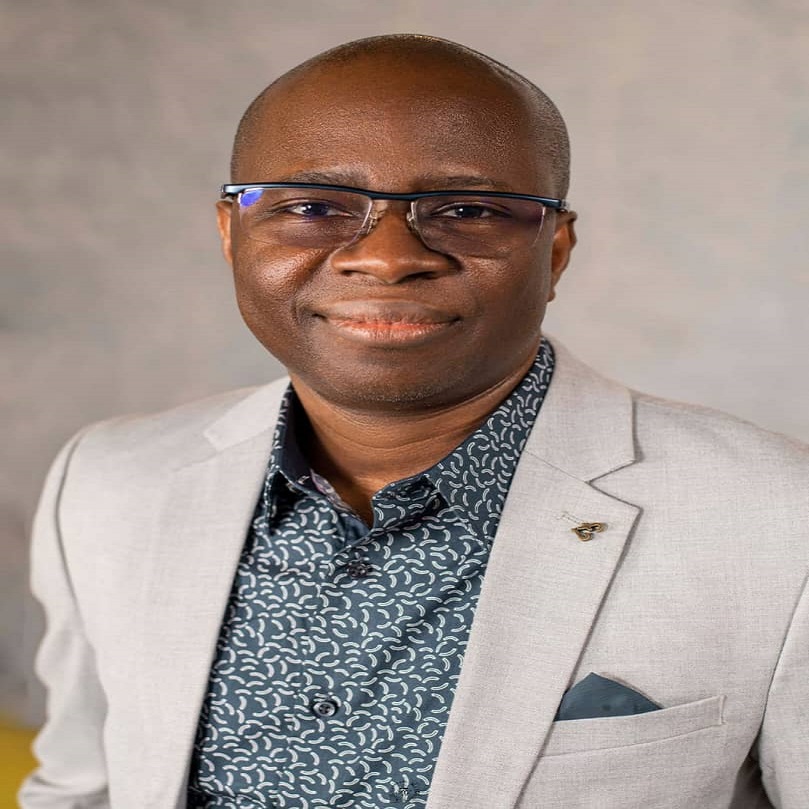Telecom
IBM Advances Geospatial AI to Address Climate Challenges

IBM has announced new efforts that apply its geospatial AI technologies, including IBM’s geospatial foundation model developed in collaboration with NASA, to climate efforts including analysis of urban heat islands in the United Arab Emirates (UAE); reforestation across Kenya; and climate resiliency in the United Kingdom (UK).

IBM continues to advance its AI model strategy in part through the creation, training, fine-tuning and open-sourcing of foundation models – models that can be used for different tasks and apply information from one situation to another – designed for domains beyond natural language, including geospatial applications.
These models, which are trained on geospatial information such as satellite images, present a unique opportunity to address climate change because unlike traditional AI models tailored for specialized tasks, geospatial foundation models – encompassing satellite and weather data – create knowledge representations from petabytes and exabytes of climate-relevant data that can facilitate accelerated and streamlined discovery of environmental insights and solutions.
These models can also be fine-tuned and applied across a multitude of areas driving or revealing climate change, from flood detection to fire scars.
“Climate change is a real and pressing issue that we must find new ways to address as quickly and efficiently as possible, including through today’s most advanced AI technologies,” said Alessandro Curioni, IBM Fellow and Vice President, Accelerated Discovery at IBM.
“AI foundation models utilizing geospatial data can be a game-changer because they allow us to better understand, prepare and address the many climate-related events effecting the health of our planet in a manner and speed never before seen.
“We are hopeful these technologies can help accelerate the rate at which we derive and apply solutions for a safer and healthier planet for future generations.”
Analyzing urban heat islands in the UAE
By the end of this century, many cities will likely experience disruptive and excessive heat waves if GHG emissions continue at high levels. To develop sustainable and equitable plans to keep cities habitable, the rising heat levels must be accurately mapped and addressed.
IBM and the Mohamed Bin Zayed University of Artificial Intelligence (MBZUAI) are pioneering an attempt to apply foundation models to the mapping of urban heat islands – areas with significantly higher temperatures compared to surrounding locations.
This innovative research specifically applies a fine-tuned version of IBM’s geospatial foundation model to understand the urban environment in Abu Dhabi and how the underlying landscape in the UAE impacts the formation of urban heat islands.
To date, the model has informed efforts that have succeeded in a reduction of heat island effects in the region by more than 3oC (5.4 F)[1]. Going forward, the model is expected to continue to provide unique insights that inform the development of urban design strategies designed to help reduce urban heat stress in changing climates.
Professor Tim Baldwin, MBZUAI Acting Provost, said: “Our collaboration with IBM marks a groundbreaking effort to utilize foundational AI models in analyzing and identifying solutions to urban heat islands for Abu Dhabi and parts of the UAE, a region which is particularly affected by climate change.
“This research underscores the vital role of AI in tackling global issues, emphasizing the urgency of continued exploration and innovation. By harnessing the power of AI, we are not merely addressing challenges; we are proactively shaping solutions for a sustainable future.
“In a world confronted by unprecedented challenges, MBZUAI stands at the forefront of pioneering research in AI, recognizing the transformative power it holds.”
Advancing reforestation and water sustainability in Kenya
In December 2022, President of Kenya H.E. D.R William Ruto unveiled the National Tree Growing and Restoration Campaign designed to plant 15 billion trees across Kenya by 2032, including in areas of critically affected water towers – forested landscapes that retain water and source many rivers throughout Kenya. While water towers account for about three quarters of the nation’s water resources, deforestation is contributing to increasing water scarcity in these regions.
IBM and the Kenyan government’s office of the Special Envoy for Climate Change Ali Mohamed have signed a Memorandum of Understanding (MoU) to support the National Tree Growing and Restoration Campaign through a new “adopt-a-water-tower” initiative.
The effort will be fueled by a new digital platform that leverages IBM’s geospatial foundation model to enable users to track and visualize tree planting and tree growing activities in specific water tower areas.
Local developers can also create fine-tuned models combining the IBM geospatial model with their own localized information to monitor forest restoration and measure above-ground biomass such as sequestered carbon, ultimately mobilizing on-the-ground efforts to plant more trees across Kenya’s water tower regions.
The President’s Spokesperson, Mr. Hussein Mohamed, MBS, said: “We recognize that technology plays a pivotal role in unlocking our full potential, optimizing resource utilization, and seizing opportunities. It serves as a means to ensure that we harness our resources most effectively to drive our grassroots-driven economic transformation agenda.
“Through our partnership with IBM, we have the capability of harnessing the power of artificial intelligence and geospatial data to advance our climate ambitions.
“These ambitions include planting 15 billion trees, rejuvenating our vital water towers, fostering increased collaboration with the private sector to promote a just energy transition for communities around our forests. Simultaneously, this collaboration will enhance our capacity to equitably participate in the carbon economy.
The potential of this collaboration extends beyond our borders and has the capacity to be replicated in other nations seeking to enhance their forest cover while also improving the economic and health well-being of their communities.”
Elevating climate resiliency across the United Kingdom
In 2021, IBM and the Science and Technology Facilities Council’s (STFC) Hartree Centre collaborated to explore the application of next-generation technologies including AI from IBM to address climate risk and resiliency across the UK.
Now, IBM, STFC and Royal HaskoningDHV, a global consulting engineering company, have collaborated to establish a new service, leveraging IBM’s geospatial AI tools, that seeks to automate and scale climate risk assessment processes for organizations. The service’s first use case will focus on the aviation sector, in which IBM’s geospatial AI will assess impacts weather-related issues, including:
- Short-term impact of extreme weather on aviation operations.
- Long-term impact of climate change on future airport operations and infrastructure.
In addition, IBM and STFC Hartree Centre, through the Hartree National Centre for Digital Innovation, are advancing a new area of research with Dark Matter Labs and Lucidminds , as part of their TreesAI project. The research project will apply IBM geospatial AI technologies to their Green Urban Scenarios (GUS) model to map urban locations where trees can be planted to help alleviate the risk of surface water flooding. The effort will eventually inform an end-to-end digital planning platform for urban planners , project developers and green urban investors across the UK.
Kate Royse, Director at STFC’s Hartree Centre, said: “There has never been a more important time to prepare for the challenges posed by climate change, both from an industrial and societal perspective. Here at STFC’s Hartree Centre we’re excited to be working with IBM and Royal HaskoningDHV, using advanced AI technologies to help the aviation industry prepare for climate risks, and become more resilient against the effects of extreme weather. Equally, our collaboration with IBM and Dark Matter Labs on the TreesAI project through our HNCDI programme will enable smarter decisions based on accurately predicting and managing flood risk, which is critical to all future city planning. Advanced AI technologies are key driver in enabling us to build a more resilient world against the adverse impacts of climate change.”
Djeevan Schiferli, Climate Intelligence Business Strategist, Royal HaskoningDHV said: “Operational and strategic planners in every company require a clear understanding of how weather and climate-related incidents affect their business operations. By harnessing AI and geospatial data, we will super charge our climate risk assessments on a global scale.”
Chloe Treger, TreesAI UK Lead, said: “Over 300,000 properties are at risk of surface-water flooding. Without action, this figure is set to almost double by 2055 due to climate change and urbanisation. Through our collaboration with IBM and STFC, we have been able to observe how trees contribute to reducing surface water flooding risks across the city under different scenarios, using GUS. This has enabled us and our partners to make the business case for tree planting and maintenance. After a successful pilot in Glasgow, we are now looking for further locations to embed this powerful data-enabled decision-making tool.”
Extending NASA collaboration to apply generative AI to weather
Beyond their initial commitment to build and deploy a geospatial foundation model, IBM and NASA have also announced work on a new, separate AI foundation model for weather and climate. By applying AI technology from IBM, the model aims to improve the accuracy, speed and affordability of weather forecasting and other climate applications. Sample applications of the model not only include forecasting, but also super-resolution downscaling, identifying conditions conducive to wildfires, and predicting meteorological phenomena. IBM researchers will work alongside NASA domain experts to train and validate the model.
Telecom
African Women Hit Hardest as Mobile Internet Gender Gap Persists

African women remain among the most digitally excluded globally, with smartphone affordability and digital literacy among the key barriers. New data from the 2025 GSMA Mobile Gender Gap Report, launched recently, reveals a persistent global gender gap in mobile internet use across low- and middle-income countries (LMICs).

It further notes that literacy, digital skills, safety, and affordability of data also remain critical barriers. The report highlights that 885 million women across these regions still do not use mobile internet, with nearly 60% of them living in Sub-Saharan Africa and South Asia.
While mobile internet is the primary way women in LMICs access the internet, offering critical lifelines to health, education, and financial services, the pace of female adoption has stalled, leaving 235 million fewer women than men connected.
Claire Sibthorpe, head of digital inclusion at GSMA, highlighted that the gender gap had narrowed significantly between 2017 and 2020, but progress flatlined in recent years.
Although 2023 brought a slight improvement, restoring the gap to 15%, 2024 saw minimal change, with the gap settling at 14%.
The disparity is most severe in Sub-Saharan Africa, where women are 29% less likely than men to use mobile internet.
“It’s disheartening that progress in reducing the mobile internet gender gap has stalled. The digital divide is driven by deep-rooted socio-economic and cultural factors that disproportionately impact women,” said Sibthorpe.
GSMA projects that closing the gender gap by 2030 could add $1.3 trillion to GDP across LMICs and deliver $230 billion in revenue to the mobile industry.
The report, funded by the UK FCDO, Sida, and the Gates Foundation, stresses the urgent need for targeted investment and policy action to bridge the digital divide and ensure that no woman is left offline.
“The mobile internet gender gap is not going to close on its own. It is driven by deep-rooted social, economic, and cultural factors that disproportionately impact women,” said Sibthorpe.
Telecom
₦800 Billion Infrastructure Plan Set to Boost MTN’s Network Quality Nationwide

In a recent interview, MTN Nigeria reaffirmed that its ongoing infrastructure investment is a strategic step to improve network quality, speed, and nationwide coverage.

Speaking on Beyond the Headlines with Nifemi Oguntoye, Ugonwa Nwoye, Chief Customer and Experience Officer at MTN Nigeria, explained that although public concern is valid, the company undertook several internal cost-efficiency measures before making structural adjustments.
She emphasised that improved investment is critical to fast-tracking improvements across MTN’s network.
Nwoye explained that MTN undertook extensive internal reforms before embarking on structural changes needed to support this scale of investment.
The company completed its phased roll-out of the increase between February and March, ensuring that every existing data plan was below the 50% increase, and most remained below 25%.
She also noted that customers were proactively informed about all changes, particularly when certain legacy plans were retired and replaced with new ones. “We gave customers six to eight weeks’ notice,” she explained.
“This is why it has taken us some time to complete this process, where we let customers know that at a certain date, this particular tariff is not going to exist.”
Nwoye stressed that MTN had exhausted other internal measures before turning to broader structural updates. Now, with the new pricing structure in place, the company is accelerating its investment in infrastructure, spending over ₦200 billion in the first quarter of 2025 alone, a 159% increase from the same period last year. A total capital expenditure of ₦800 billion is planned for the year.
She noted that this investment is a direct outcome of long-term operational restructuring aimed at improving service quality.
She added, “We are investing over ₦800 billion this year alone in our infrastructure. This will translate into better customer experience, reduced congestion, faster internet speeds, and wider network reach.”
This investment will support the upgrade of over 1,000 cell sites and the expansion of more than 2,000 transmission links nationwide.
Nwoye stressed that these upgrades are designed to deliver faster data speeds, fewer dropped calls, and broader network reach, especially in underserved areas.
She acknowledged the public’s expectations for immediate service improvements but emphasised that large-scale infrastructure takes time to deploy.
Nonetheless, MTN expects customers to begin experiencing visible improvements in network performance by the second half of the year.
In a sector where service quality and customer satisfaction are closely watched, MTN maintains that its ongoing investments are not merely capital commitments but vital enablers of improved digital experiences across Nigeria.
Telecom
Remita’s Bold Leap: Nigeria’s Fintech Giant Expands Across Africa

Remita, the pioneering Nigerian payment technology platform developed by SystemSpecs, is charting a bold new course with its planned expansion into markets across Africa.

What began as a payroll feature in an HR application has now become a robust ecosystem processing over ₦60 trillion annually—one that stands on the verge of reshaping the continent’s fintech landscape, Mr. Deremi Atanda, Managing Director/CEO of Remita Payment Services Limited, says in an exclusive interview that will grace the cover of eGovernance Nigeria Magazine.
The forthcoming edition of eGovernance Nigeria Magazine, a publication of the Technology Times media brand owned and operated by Digital Transformation Media Limited (DTML), will spotlight this extraordinary journey, and present Remita’s evolution as an inspiring tale that informs, educates, and entertains readers about indigenous innovation making global strides.
“We’ve become an ecosystem of rails, products, and services—robust,” Atanda, Managing Director/CEO of Remita explains during the exclusive interview with eGovernance Nigeria Magazine.
“Layering all of that with the many different customers we’ve had, typically every year we process in excess of maybe ₦60 trillion in transactions in Nigerian Naira. And this can only grow, especially as we begin to think of a vibrant Pan-African expansion. We’re at the fringe of that.”
In a compelling narrative that mixes grit, vision, and innovation, Atanda recounts Remita’s early days. “What many people know today as Remita actually started out as a feature within our HR/payroll application.
“You process salaries, and you just want to pay—so just remit salaries. And by the way, that’s where the name ‘Remita’ came from: Remittance. We just took out one ‘T’ and left it at ‘A.’”
Even the company’s logo carries symbolism of that transformation. “I don’t know if you’ve seen our logo—it has three dots, in ascending size. There are many stories in that logo. It started as a feature, and then we brought it out as a product,” Atanda explains.
Yet the road was not without its bumps. “The first time we brought it out as a product was to bid for the National Pension Commission. This was in 2004, with the PenCom Act.
“We packaged this into a product in less than two weeks to take care of end-to-end pensions as it was conceived. Trust me, that vision is still viable today. But we lost that bid.”
Undeterred, SystemSpecs pivoted. “We went back and said, ‘What do we do with this asset?’ If it’s not going to work for pensions, let it become a product. And that’s how we renamed pensions.com.ng as Remita, and it became a product.”
As demand grew, Remita expanded beyond payroll. “Some people want to do their own payroll and just make payments, so let them have a site to go to. Later, it evolved into not just payroll payments. People wanted to do other types of payments. If you want to do non-salary payments, you go to Remita,” he says.
Today, Remita has fully matured into a standalone company. “So those three things—feature, product, company. That’s been the evolution.” With a Tier 1 licence from the Central Bank of Nigeria, Remita is now a fintech powerhouse. “We do switching, we do payment service provisioning, we do super agency, we do terminals—everything you can think about. We provide some basic services within the payment space, including payment service advisory.”
A lesser-known chapter of Remita’s growth includes building Nigeria’s first account-to-accountswitch. “Before TSA, we had built a rail—Nigeria’s first account-to-account switch, worked with all the banks. Not many people know that story. Account-to-account. The front of it, the application, and the rail—first of its kind.”
On the pivotal Treasury Single Account (TSA) deal with the Federal Government of Nigeria, Atanda reveals, “TSA was a happenstance. The government was looking to solve a problem, and we were looking to get regulated. It’s that term people use—when they say ‘luck,’ it’s just preparation meeting opportunity.”
Reflecting on the journey, he adds, “These have been some of those moments where you feel validated, where the visionary leadership that set the business up feels the vision is being realized.”
Today, Remita employs over 300 Nigerians and looks beyond its home shores. “The vision is huge, and we’re committed to that. So, we see exponential growth, and we’re positioning for that.”
Mr. Shina Badaru, Chairman of DTML, says Remita’s story is an inspirational example of local innovation with global relevance. “Remita’s success highlights the critical role of indigenous technology solutions in redefining Africa’s digital economy,” he says.
“As the cover story of the next issue of eGovernance Nigeria Magazine, we aim to showcase how homegrown innovation is not only solving problems locally but is also poised to transform markets across the African continent.”
According to Badaru, “Remita’s inspiring journey connects seamlessly with our article of faith to continue to showcase Nigeria’s growing contributions to the global technology industry.”
eGovernance Nigeria Magazine is a flagship DTML platform with operations across print, digital, TV, events, and e-commerce channels.
“This feature not only celebrates Remita’s evolution,” Badaru adds, “but also signals a pivotal shift in the narrative of Nigerian and African technology—from survival to scale, from local impact to continental transformation.”
As Remita sets its sights on Africa, it is poised to bring financial inclusion, digital infrastructure, and innovative fintech solutions to new and underserved markets. With a strong foundation and visionary leadership, the company is ready to deliver the next phase of its remarkable journey.

 General News3 days ago
General News3 days agoNITDA Advocates Strategic Partnership in Research to Unlock Nigeria’s Digital Potential

 Telecom3 days ago
Telecom3 days agoGSMA Urges Governments to Prioritise Affordable Spectrum Costs to Support Global Digital Growth

 Telecom2 days ago
Telecom2 days ago₦800 Billion Infrastructure Plan Set to Boost MTN’s Network Quality Nationwide

 Telecom3 days ago
Telecom3 days agoTelcos Worry over Possible 5 Percent Tax Return

 Telecom3 days ago
Telecom3 days agoSophos Launches MSP Elevate Program to Boost MSP Growth and Profitability

 E-Financial3 days ago
E-Financial3 days agoWhy and How Banks Fail in Nigeria by CIoD Chair

 E-Business2 days ago
E-Business2 days agoNITDA, CISCO Empower Youth with Digital Skills

 Telecom3 days ago
Telecom3 days agoGet Ready: Google Unveils 8 Game-Changing Android Updates



























